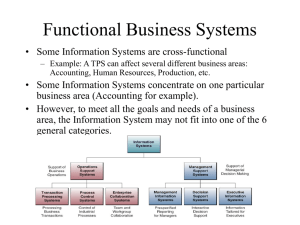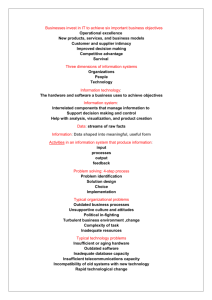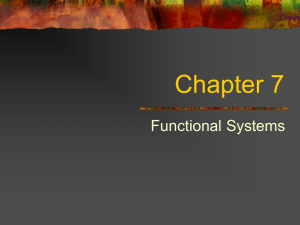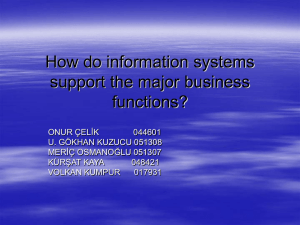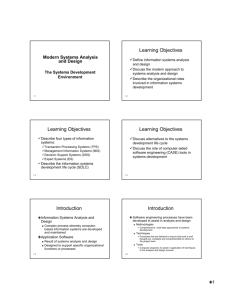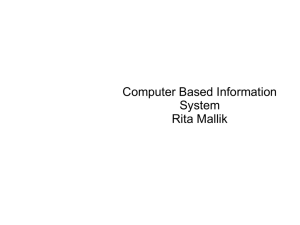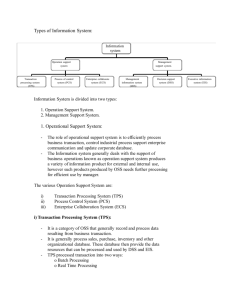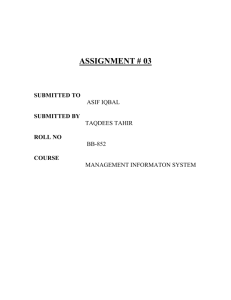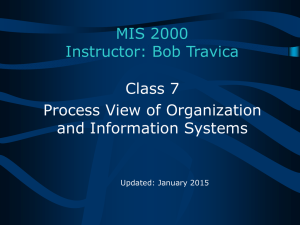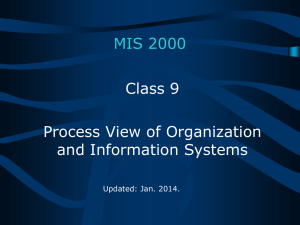File
advertisement
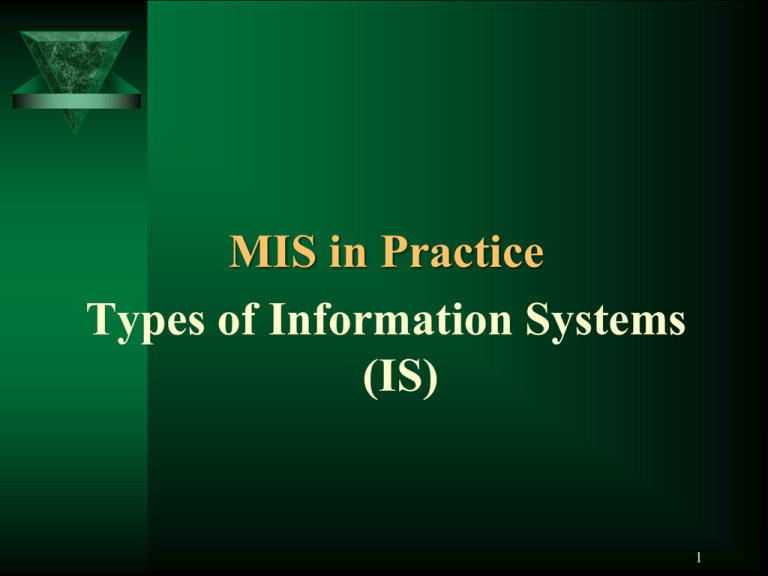
MIS in Practice Types of Information Systems (IS) 1 Types of IS They are: Transaction Processing Systems (TPS) Management Information Systems (MIS) Decision Support Systems (DSS) Management Reporting Systems (MRS) Knowledge Based Systems (KBS) Office Information Systems (OIS) 2 Supports of IS Support for Strategic Planning Internal Use Support for management Control Support for Operational Control Improved Product Quality External Use Improved Product Delivery 3 Transaction Processing System (TPS) It supports day-to-day operations. For example: – Order Entry Systems – Cheque Processing Systems – Account Receivable Systems – Accounts Payable Systems – Payroll Systems – Ticket Reservation Systems 4 Transaction Processing System (TPS) Transaction processing is a set of procedures for handling the transactions. Common activity includes: – – – – – Calculation Classification Sorting Storage Summarization 5 Examples: Sales Order Processing System: – The TPS data contains the list of products, available for sale, their prices and related data. Railway Reservation System: – The TPS data contains the location of available seats. – It displays a message on the terminal indicating seats sold out to people. – It also prints the tickets and perhaps a mailing label for sending them. 6 Examples: So the TPS program generates two types of outputs: – It sends message back to the operator terminal – It generates printed documents 7 8 Need of MIS It helps management at different levels It is a means of communication where data are – collected, – stored and – retrieved for planning, operation and control of an organization It supports decision making with different types of information obtained from different functional areas of management like HR, Finance, Marketing etc.. 9 Functions of MIS Collect Data Store and Process Data Present Information to Managers 10 To Managers Relationship between Decision Making and MIS 12 External Sources •Customers •Distributors •Competitors •Consultants External Environment •Government Data •Technology Data •Social Change Data.. etc Internal Sources •Staff Specialists •Sales Representatives •Production People Management Information System Managers Decision Making Internal Environment •Marketing Data •Financial Data •Production Data •Personnel data.. etc 13 14 TPS Vs MIS •They are concerned with day to day operations Example: Ticket Reservation •MIS is conceptually a level above Transaction Processing System. •They are concerned with activities that do support operations. TPS: Takes orders and print tickets. MIS: Measures and reports the performance of each of the agents who will sell tickets. It keeps track of the number and amount of each agent’s sales and it regularly produce reports about agent’s effectiveness. Decision Support System (DSS) An information system that utilizes decision models, a data base and a decision makers own insights in an ad-hoc, interactive analytical modeling process to reach a specific decision by a specific decision-maker. Or DSS is a system for providing information to help management with new, un-structured decision making. 16 Example of DSS A strike by the dancer’s union-– It forces the cancellation of arranged dance performances. The management of the dance association wants to know— – The impact on revenue of the cancellation of each performance. A DSS could be used to process the ticket agencies data to produce the information. 17 Architecture of a generic DSS application 18 Components of a DSS 19 MIS Vs. DSS Points MIS DSS Focus On structured tasks On semi structured tasks, and routine requiring managerial decisions judgment Emphasis On data storage On efficiency Reliance On computer expert On managers own judgment Data Access Indirect access by managers On data manipulation On effectiveness Direct access by managers

